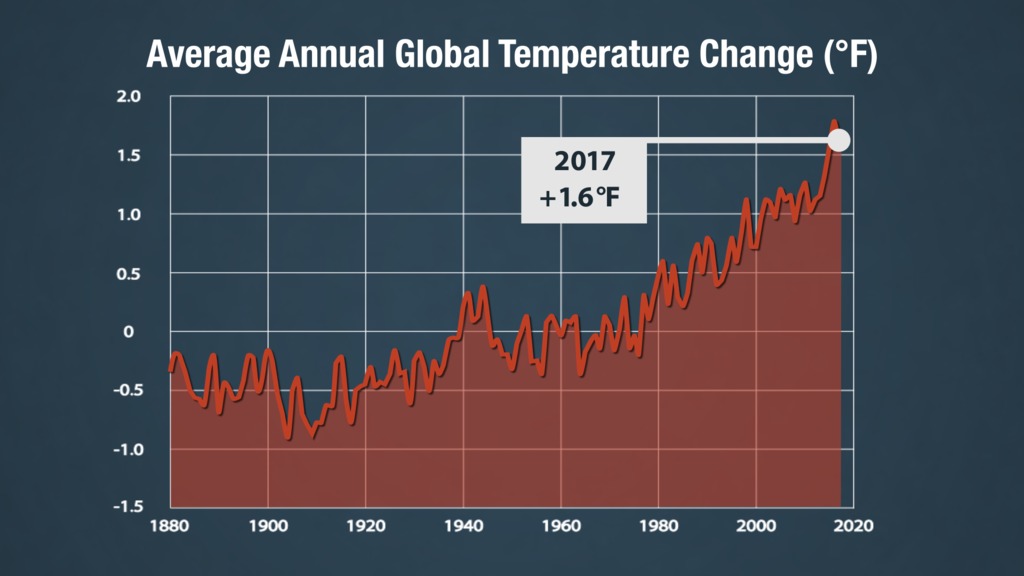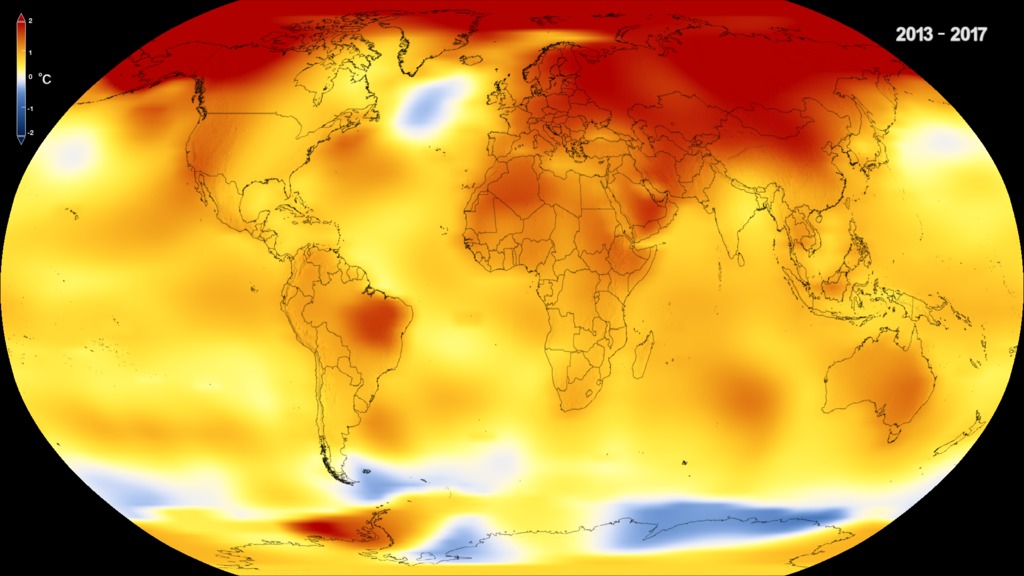Warm World of 2017

2017 was the second hottest year on record.
2017 was the second hottest year on Earth since global temperature estimates first became possible in 1880. Although 2016 still holds the record for the warmest year, 2017 came in a close second, with average temperatures 1.6 degrees Fahrenheit (0.90 degrees Celsius) higher than the average of the mid-20th century. 2017’s temperature record is especially noteworthy, because we didn’t have an El Niño this year, the periodic warming of the tropical Pacific Ocean waters, which affect wind and weather patterns, and usually results in warmer temperatures globally. NASA scientists analyze temperature data from 6,300 weather stations and ship- and buoy-based observations around the world on a monthly and yearly basis. Researchers at the National Oceanic and Atmospheric Administration (NOAA) do a similar but independent analysis, and their 2017 analysis tracked closely with NASA's. Since the global temperature is an average for the whole planet, different places on Earth experienced different amounts of warming, with the strongest warming trends seen in the Arctic regions. Increasing global temperatures are the result of human activity, specifically the release of greenhouse gases like carbon dioxide and methane, which trap heat inside the atmosphere, raising temperatures around the globe. Watch the videos to learn more.
Watch Earth's average global temperature rise from 1880 when records began to the present.
The baseline average termperature is set as the global average from 1951-1980. Blue colors were cooler and red warmer.

The graph shows the global average temperatures have risen over 1.5 degrees F above the mid-20th c. baseline.
For More Information
See NASA.gov
Credits
Please give credit for this item to:
NASA's Scientific Visualization Studio
-
Animators
- Kel Elkins (USRA)
- Lori Perkins (NASA/GSFC)
-
Producers
- Kathryn Mersmann (USRA)
- Matthew R. Radcliff (USRA)
-
Scientist
- Gavin A. Schmidt (NASA/GSFC GISS)
-
Writer
- Kate Ramsayer (Telophase)
Release date
This page was originally published on Tuesday, February 20, 2018.
This page was last updated on Wednesday, May 3, 2023 at 1:46 PM EDT.


![Complete transcript available.Music: Sojourner Rover by Craig Warnock [PRS], Lee Ahmad Baker [PRS], Sean Hennessey [PRS]](/vis/a010000/a012800/a012822/LARGE_MP4_12822_2017Temp_large.00001_print.jpg)